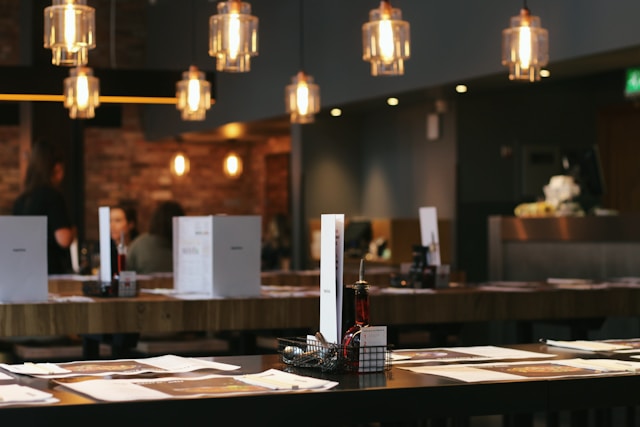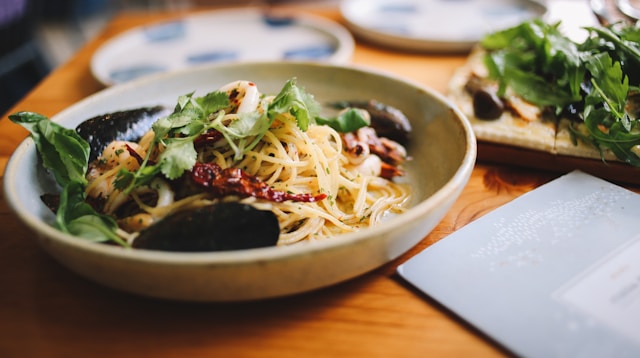A landmark on its own, London has a lot of historic sites for tourists to visit: from the Tower of London to the British Museum, without missing out on the National Gallery, the Royal Botanic Gardens Kew or the Westminster Abbey. However, some innovative forms of tourism propose a new way to approach this famous metropolis, this time through its notorious dishes, restaurants and the history of its flavors. Here, we propose a list of what to look out for in your next food tour in London.

Food tours are known for offering the guide of a specialist that takes you to the best of the local cuisine and the highlights of the gastronomical culture, delving into the city’s history while doing so.
In the different proposals of any Food Tour London, you will get to know the most celebre restaurants, the hidden jewels that only a connoisseur can reach and much more. However, there are some dishes you cannot miss while visiting the city. Some of them are:
One of the plates that are associated the closest with British culture, this well-known item of the London menu (and a compulsory part in almost any Food Tour London city) is said to have been one of the few things not to suffer rationing during the World War II years.
Not only a dinner, but a tradition: the combinations of meat (beef, lamb, pork or chicken), roast potatoes, Yorkshire pudding, cauliflower cheese, veggies and gravy is only completed when shared in groups (it is usually a family tradition).
You may not know bangers, but you know sausages, which are the same. Bangers got their name by “exploding” when they were fried. This pork sausage is served with mash and onion gravy.
Despite the name, some compare it to a muffin, for this delicacy consists of a moist sponge cake (it may include dates or raisins) that is soaked in toffee sauce. The final dish is served with ice cream or custard.
While today it is considered a classic English plate, it was only brought to the country in World War II by Canadian pilots.
A tradition that originated in the 19th century but has remained as English and contemporary as ever, a classic afternoon tea includes cakes, finger sandwiches and, as the name suggests, lots of tea.
The popularity of this icon is seen in the wide variety available for customers: from luxury options to local, cozy tea rooms.
For those who are searching for a South Asian (including Indian and Pakistani cuisine) touch in English cuisine, this is the dish for you. Coming from the days of the British empire, this plate includes marinated chicken, spices (garam masala, cumin and others) and yogurt.
Yes, we all know breakfast, but what is included in this British tradition that became widely popular during the Industrial Revolution, no matter the socioeconomic class? Bacon, sausage, baked beans, fried egg, tomato, mushrooms and black pudding: there are a lot of variations for you to choose from, some of them going as far as including potatoes (chips, fried potato slices, among others) and some restaurants include vegetarian options as well.
Do not let the name deceive you: this dish has become a traditional English snack, which consists of a boiled egg with pork meat that has been coated in breadcrumbs and then fried. While the story goes that it was invented as a portable snack for travelers in the store Fortnum and Mason, nowadays you can find it almost anywhere in the city.
Pie is said to have been brought by the Romans almost two millenniums ago , but it was during the Industrial Revolution that this dish became an icon for the working class. Simple yet nutritious and tasty, this dish includes meat pies (beef, ham or chicken), mashed potato, parsley sauce (sometimes called “liquor”) and, in some cases, jellied eels. The popularity of this plate has led some restaurants to create vegetarian alternatives.
The name points both towards the combination of ingredients (meringue, strawberries, raspberries, whipped cream and fruity sauce) and to the place where this dish was created (Eton College, back to almost the 19th century). Some variations aim to replace the cream with ice cream or to try different combinations of fruit, but you will be able to find it almost anywhere.
Close to the Thames River, London always had a loadful of eels, so the working-class used them for cheap yet tasteful recipes. The gelatinous body of the eel sets like a jelly after being boiled with species and left to cool. It was usually served with bread and butter.
Some say Romans shipped them to the Roman Empire, because they considered London’s oysters to have the best quality. While they were thought to be the food of the poor during the nineteenth century (they were plentiful and could be dangerous for there was no refrigeration), nowadays it is a not-to-miss-out-on dish of British culture.
Back in the day, shells with a hole punched in them were used as proof of payment for transportation across the city. This gave the name to the modern “Oyster Card”.
Perhaps one of the closest to British culture, this recipe is a London classic. As the name suggests, this dish contains beef. But this time it is rolled with a layer of mushroom mixture or pate inside a puff pastry.

Other renowned dishes include the Victoria Sponge Cake, (which consisted of a yellow sponge cake with strawberry jam and whipped cream), Banoffee pie (with a biscuit base, topped with sliced banana, toffee sauce and whipped cream) or salt beef bagels, among many others.
From full dinners to desserts, it does not matter of you like salty food or you have a sweet tooth: London has every kind of recipe in store for you.